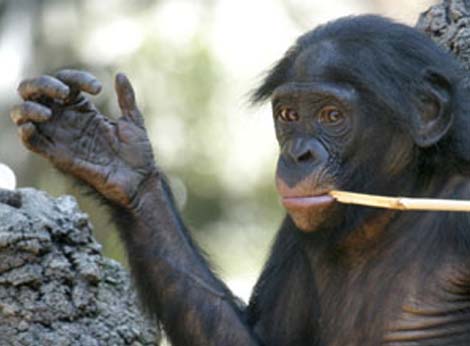

Recent studies of handedness in primates revealed that hand preference is influenced by a number of different factors including body posture, sex, age, task difficulty, task complexity and experience, making it difficult to reconstruct its evolution.

However, to date, the evolution of primate handedness, and thus, the origin of human handedness, is still unclear. Fossil records and recent findings in great apes indicate that right-handedness evolved early in human evolution. Approximately 90% of the human population are right-handed independent of culture. Therefore, handedness has become a major interest in evolutionary research. In humans it is believed that handedness is related to brain lateralization of language and other cognitive functions. Our findings suggest that small-bodied, quadrupedal primates, adapted to the fine branch niche of dense forests, prefer mouth retrieval of food and are less manually lateralized than large-bodied species which consume food in a more upright, and less stable body posture. Rather, they propose that ecological adaptation indicated by postural habit and body size of a given species has an important impact on hand preference in primates. Our results do not support the current theories of primate handedness. Additionally, we found no influence of body posture on hand preference in gray mouse lemurs. If mouth usage was inhibited, they showed an individual but no population level handedness for all four postural forced food grasping tasks.

Instead, they preferred to pick them up using a mouth-hand combination or the mouth alone. The tested mouse lemur population did not prefer to use their hands alone to grasp for food items. Second, we explored the influence of body posture by applying a forced food grasping task with varying postural demands (sit, biped, cling, triped). First, we investigated hand preference in a simple food grasping task to explore the importance of hand usage in a natural foraging situation.
CHIMPANZEE HAND GRIPS MANUAL
To gain insight into the origin of manual lateralization in primates, we studied gray mouse lemurs, suggested to represent the most ancestral primate condition. Current hypotheses suggest that body posture (postural origin hypothesis and bipedalism hypothesis) have an important impact on the evolution of handedness in primates. The origin of human handedness and its evolution in primates is presently under debate.


 0 kommentar(er)
0 kommentar(er)
